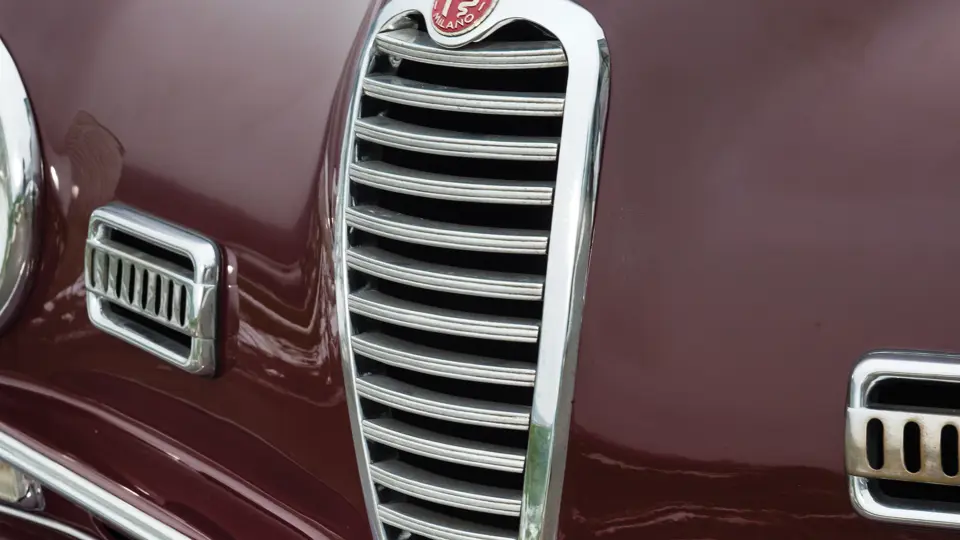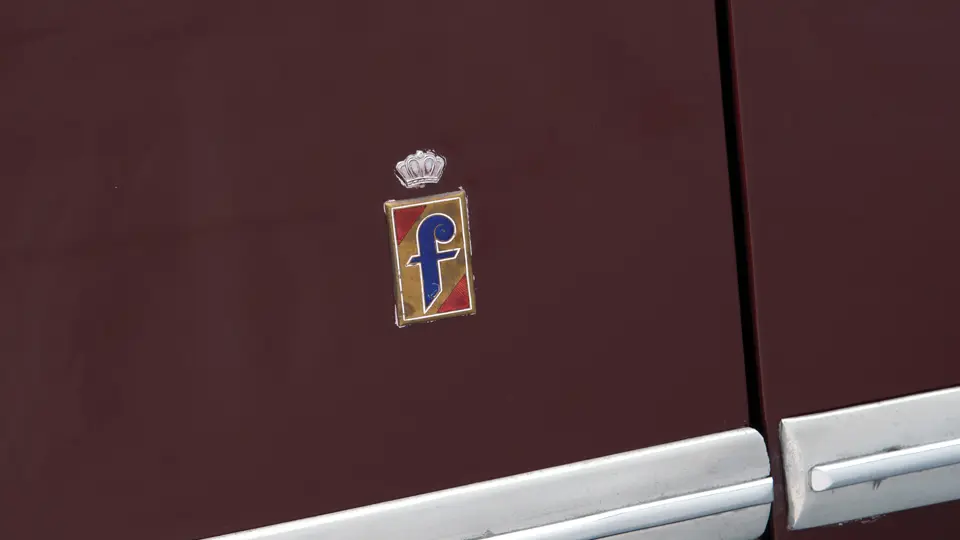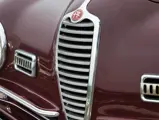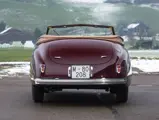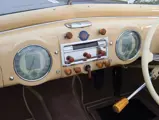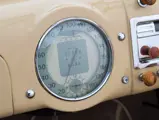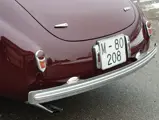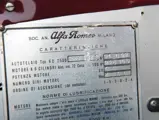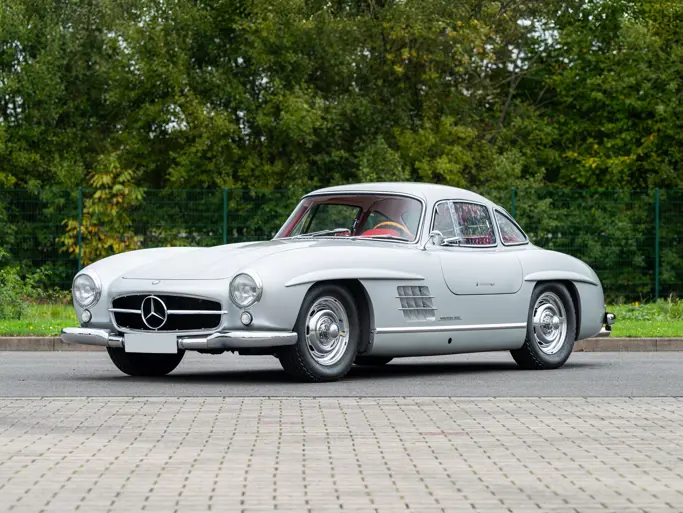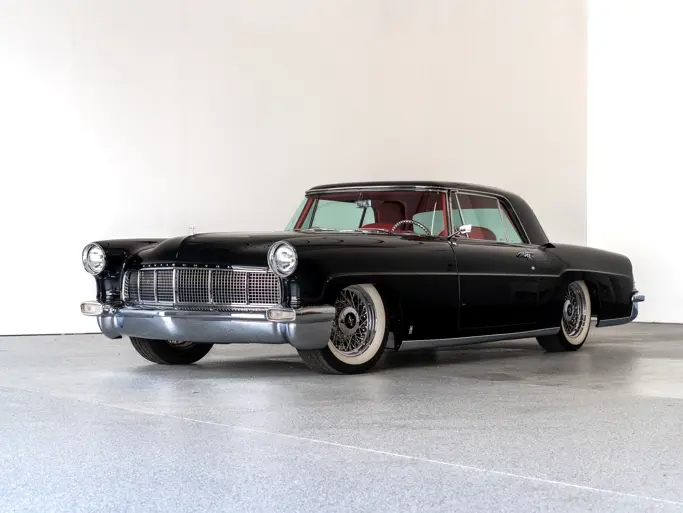
1948 Alfa Romeo 6C 2500 S Cabriolet by Pinin Farina
{{lr.item.text}}
€224,000 EUR | Sold
{{bidding.lot.reserveStatusFormatted}}
- Original chassis and body
- One of only 779 produced by Pinin Farina between 1939 and 1952
- Châssis et carrosserie d'origine
- Seulement 799 exemplaires produits par Pinin Farina entre 1939 et 1952
95 bhp, 2,443 cc dual overhead-cam inline six-cylinder engine with Weber carburettor, four-speed manual transmission, four-wheel independent suspension with front double wishbone with coil springs, and four-wheel hydraulic drum brakes. Wheelbase: 3,000 mm
Moteur six-cylindres en ligne, 2 443 cm3, 95 ch, 2 ACT, carburateur Weber, transmission manuelle quatre rapports, suspension avant et arrière indépendante avec doubles triangles et ressorts hélicoïdaux à l'avant, freins à tambours à commande hydraulique sur les quatre roues. Empattement 3 000 mm.
Called ‘The Last Great Alfa’, the 6C 2500 is the last in the long line of six-cylinder Alfas that began in 1928 with the 6C 1500. It heralded the end of an era for Alfa Romeo and was bodied by some of the most famous carrozzeria of the time – Touring, Bertone, Zagato, and of course, Pinin Farina.
Described by automotive author and historian Griffith Borgeson as a ‘bridge to post-World War II production’, the 6C 2500 model retained the 6C 2300’s independently sprung suspension while upgrading the engine. Bruno Treviso redesigned the classic straight-six engine, increasing the cylinder bore by 2 millimetres, improving the cylinder head for improved aspiration and increased compression. These improvements, along with a better fuel feed, helped the 6C 2500 become the first Alfa Romeo to reach 100 mph. The Sport configuration, with its lightweight bodywork, boasts a respectable 95 brake horsepower.
The 6C 2500 S on offer here was delivered new in Spain, having been ordered on 28 October 1947 and delivered on 9 March 1948, through Alfa Romeo importer Ruiz Jimenez. It was sold to a Mr Dioniso, then head of the Madrid Stock Exchange agents, who gifted it to his mistress, Ms Emilia Sierra. The car retains an interesting additional data plate issued in Spain, which details its delivery to Ms Sierra. The car remained in its original ownership until 1987, when it was acquired by its second owner, who had the car restored and kept it well maintained before passing it to another owner. The body was found to be supremely original, aside from having been repainted, and had never seen rust or damage.
This example is sold with Swiss tax paid and drives and presents well, waiting for a new owner to enjoy and appreciate it as one of the last truly hand-built, luxury Alfa Romeos.
Surnommée "La dernière grande Alfa", la 6C 2500 est la dernière de la longue lignée d'Alfa Romeo six-cylindres, commencée en 1928 avec la 6C 1500. Elle a signé la fin d'une époque pour Alfa Romeo et elle était carrossée par certaines des plus célèbres carrozzeria de son temps : Touring, Bertone, Zagato et, bien sûr, Pinin Farina.
Présentée par l'historien et auteur automobile Griffith Borgeson comme "une passerelle vers la production d'après-guerre", la 6C 2500 reprenait la suspension indépendante de la 6C 2300 avec un moteur modifié. Bruno Treviso redessinait le six-cylindres en ligne et augmentant l'alésage de 2 mm et en modifiant la culasse pour améliorer la circulation des gaz et augmenter le taux de compression. Ces modifications, associées à un meilleur système d'alimentation, ont contribué à faire de la 2500 la première Alfa Romeo capable d'atteindre 160 km/h. La version Sport, avec sa carrosserie légère, bénéficiait de la puissance respectable de 95 ch.
Après avoir été commandée le 28 octobre 1974, la 6C 2500 S proposée ici a été livrée neuve le 9 mars 1948 en Espagne, par l'intermédiaire de l'importateur Alfa Romeo Ruiz Jimenez. Elle a été vendue à un M. Dioniso, qui dirigeait alors les agents de change de la bourse de Madrid et qui en faisait cadeau à sa maîtresse, Mlle Emilia Sierra. La voiture comporte une intéressante plaque d'informations délivrée en Espagne, qui détaille la livraison à Mlle Sierra. La voiture est restée entre les mains de son premier propriétaire jusqu'en 1987, date à laquelle elle était cédée à son deuxième propriétaire. Celui-ci la faisait restaurer et la maintenait en bon état avant qu'elle ne passe chez un autre propriétaire. La carrosserie était considérée comme en remarquable état d'origine, hormis le fait qu'elle avait été repeinte, et n'avait souffert ni de corrosion ni de dommages.
Vendu avec la taxe suisse payée, cet exemplaire fonctionne et se présente bien, tout en attendant qu'un nouveau propriétaire l'utilise et en profite comme une des dernières Alfa Romeo de luxe et de construction vraiment artisanale.
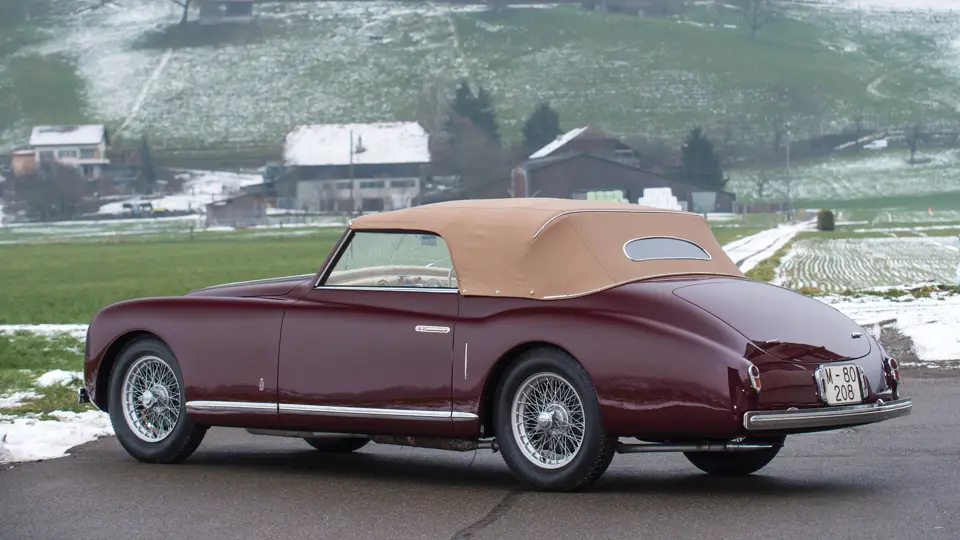



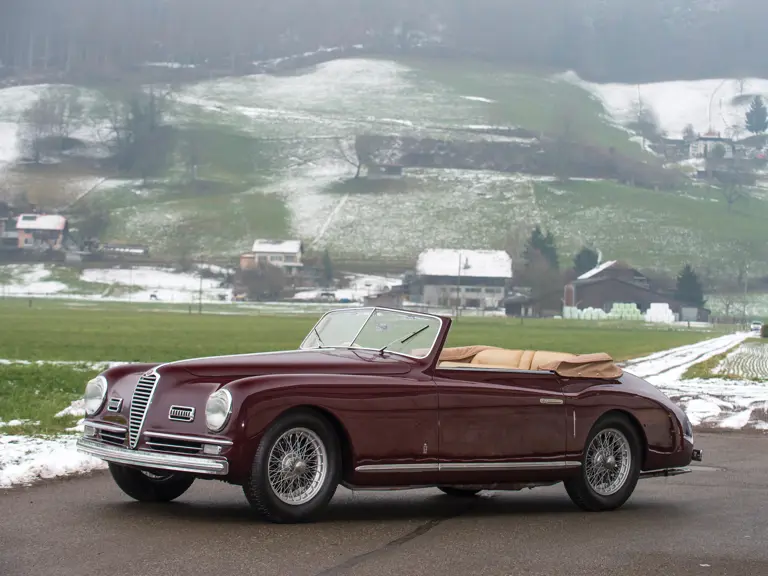
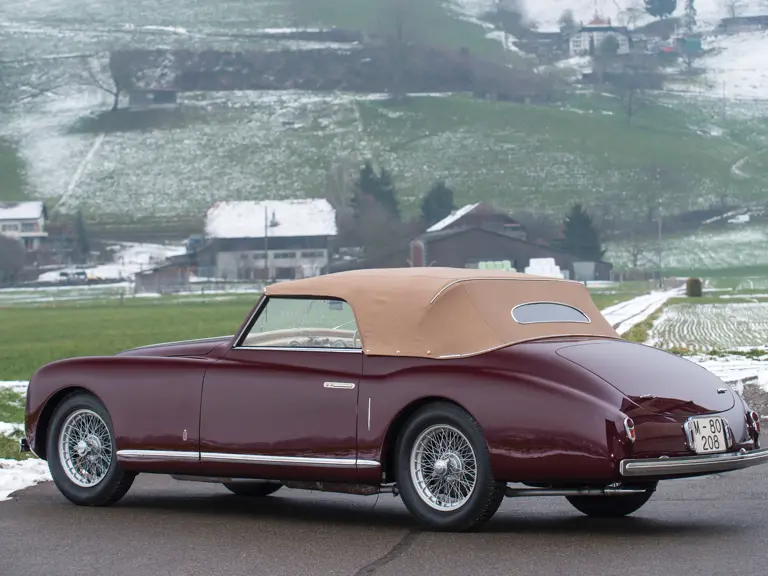
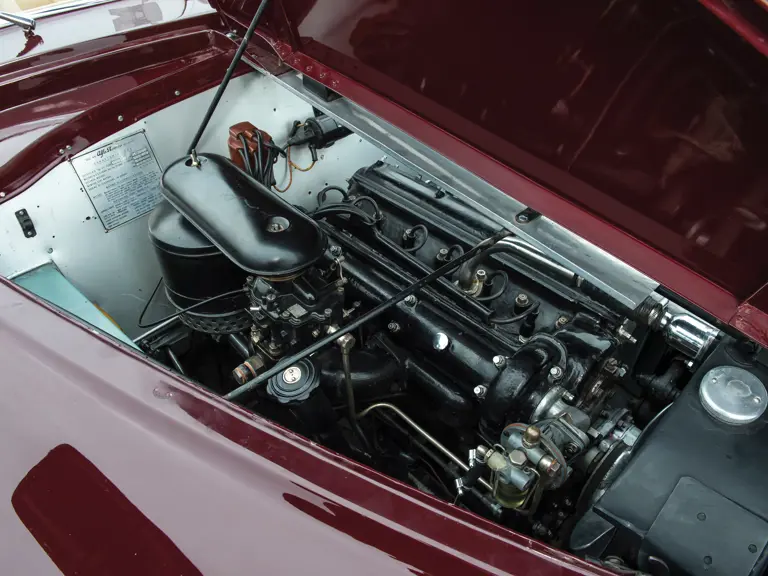
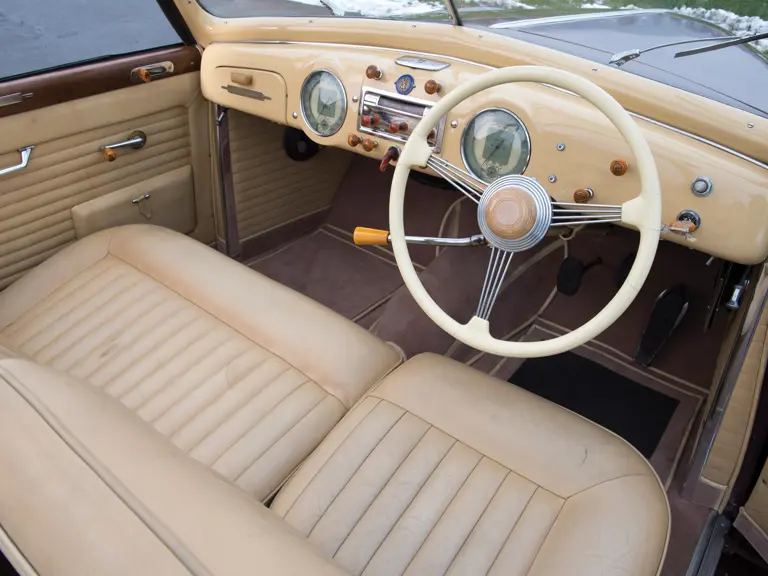



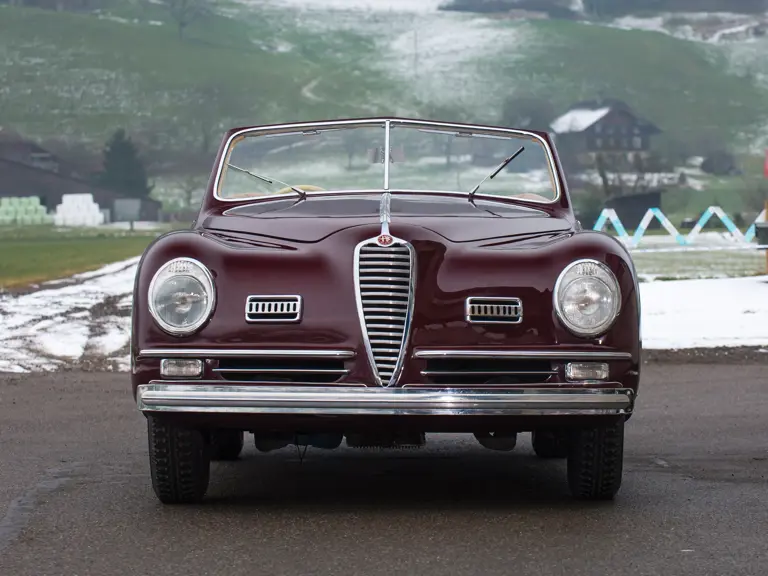
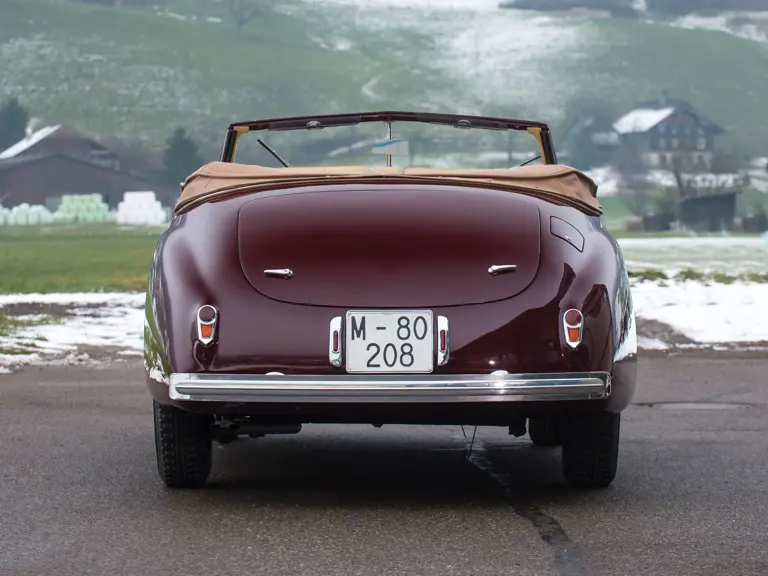
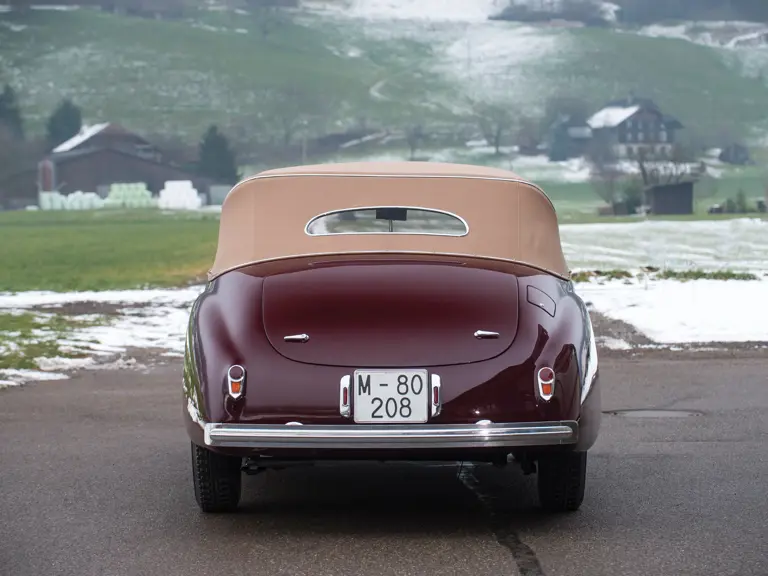

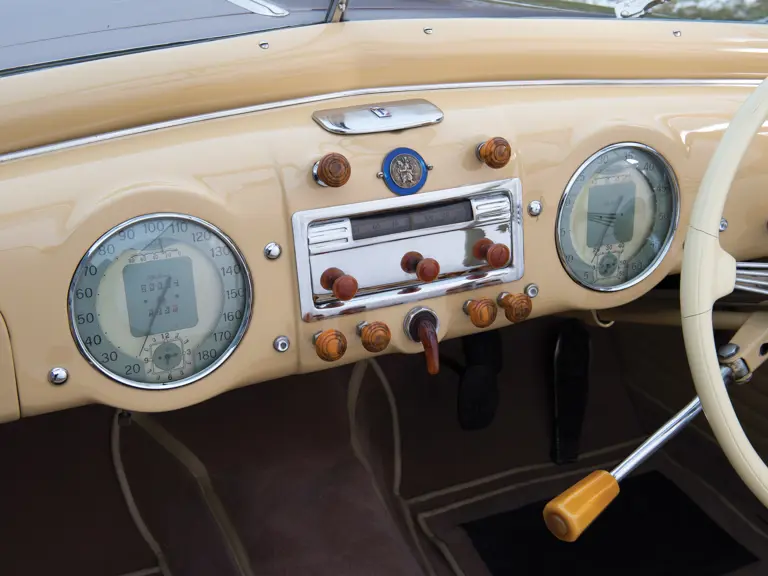
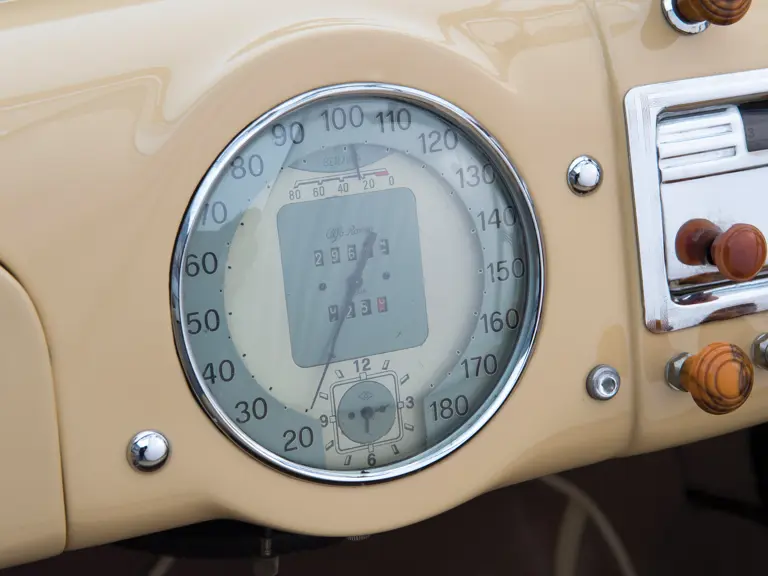
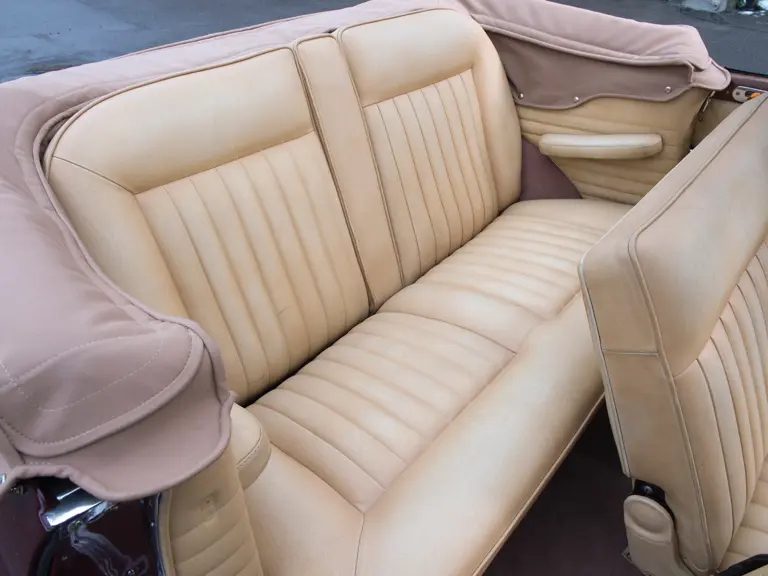
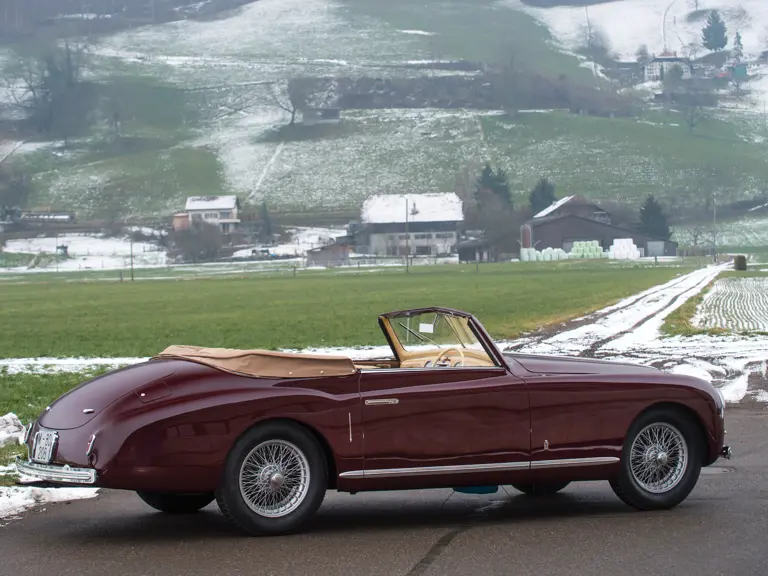
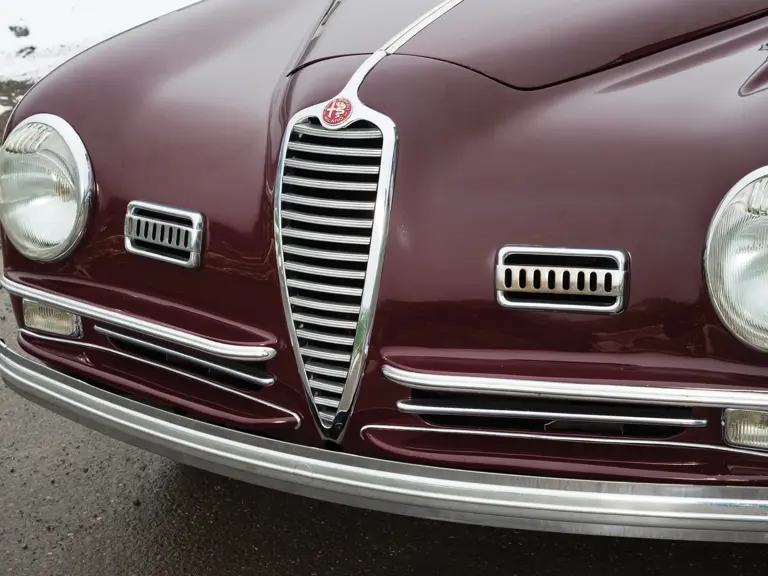
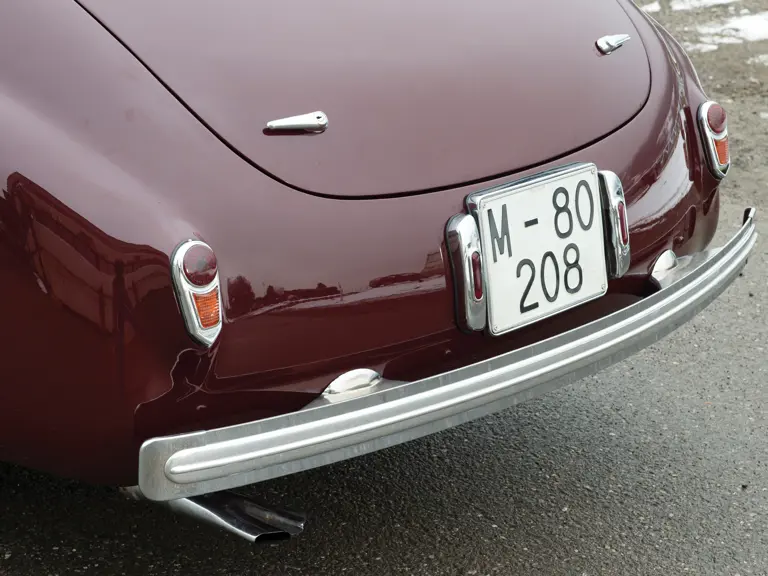

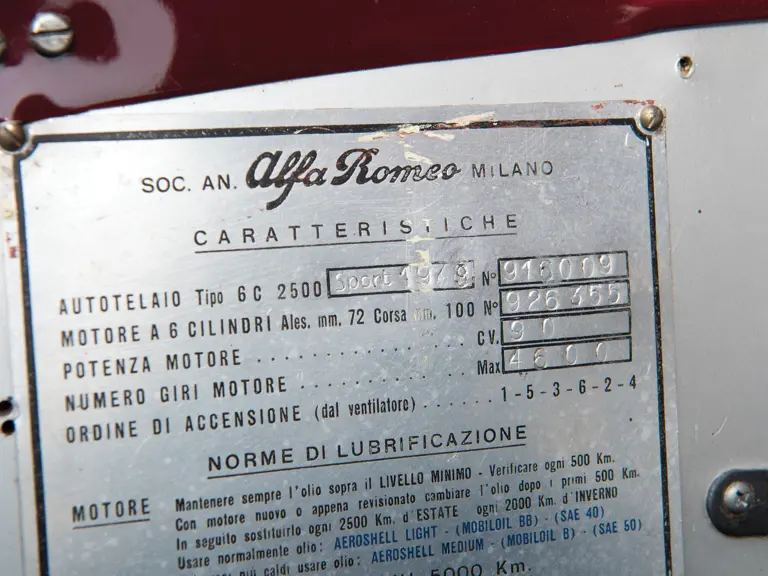
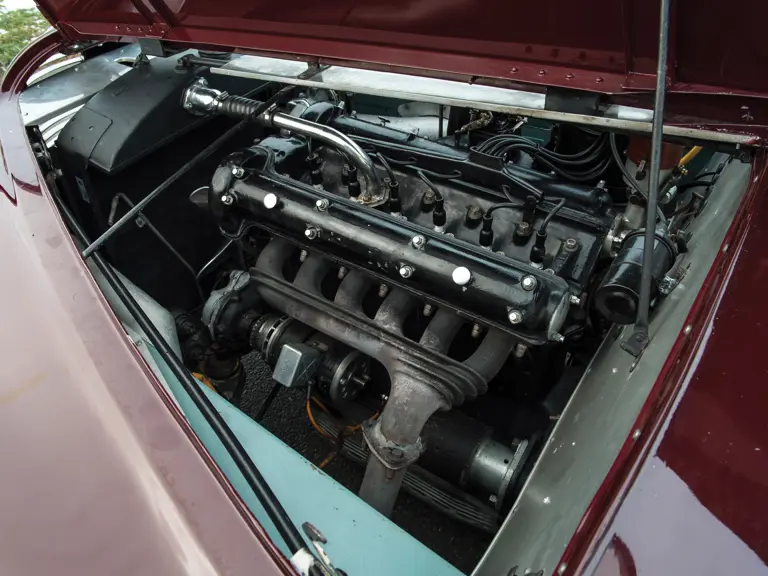
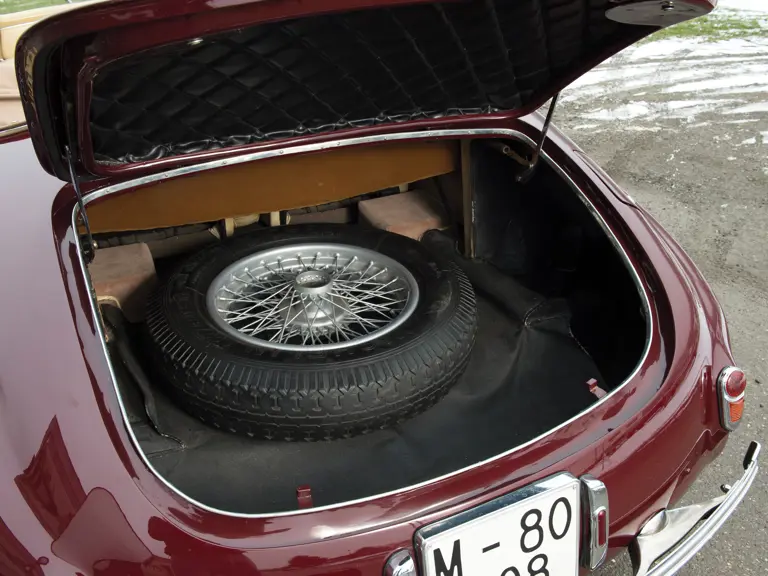
 | Paris, France
| Paris, France

